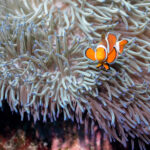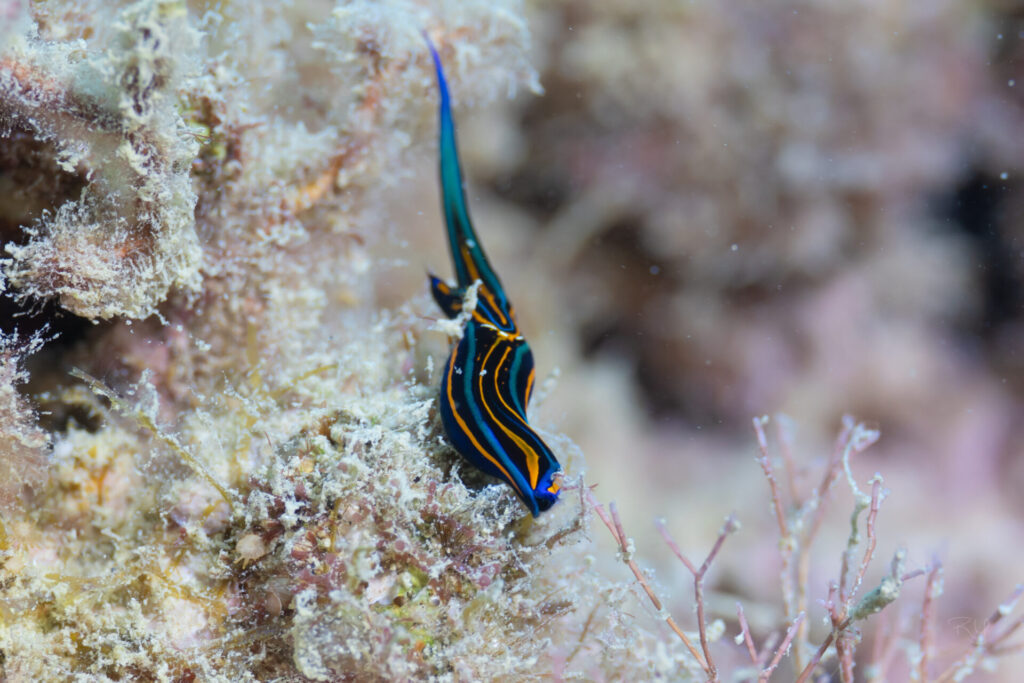Manza is a dive site located in the central part of Okinawa’s main island, offering over six dive spots suitable for intermediate and advanced divers.
Here are some of the marine species observed as of May 2025.
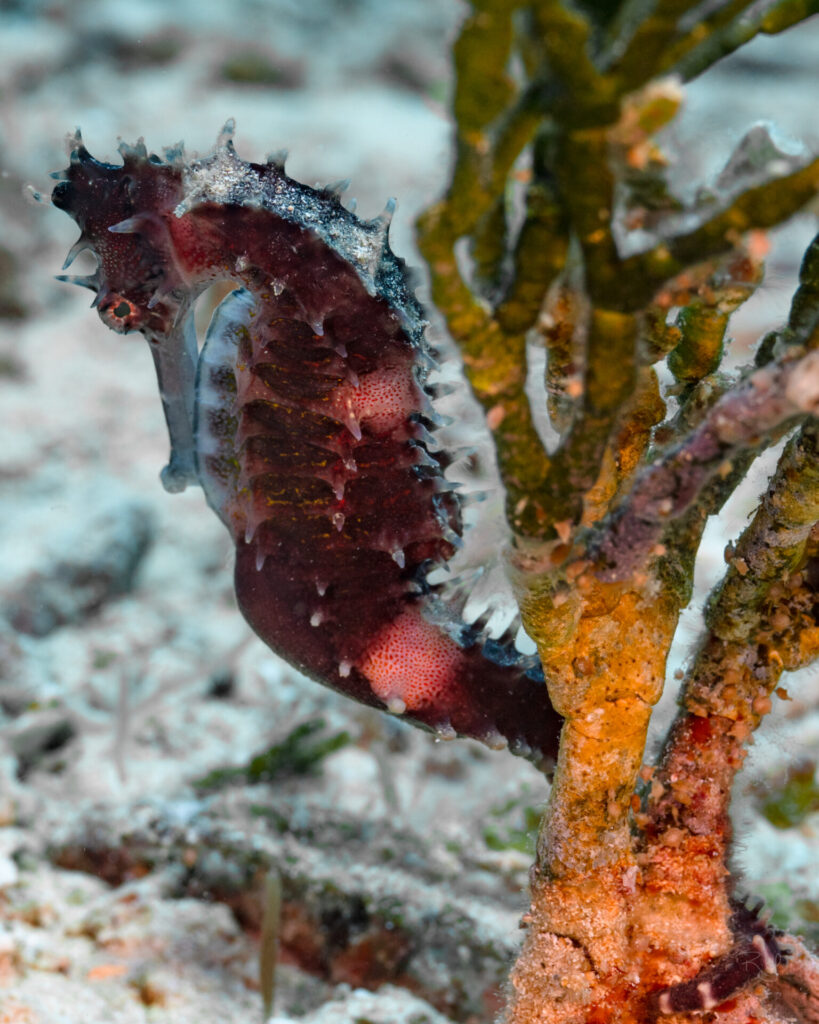
The thorny seahorse (Hippocampus spinosissimus) is known for its spiky appearance and incredible camouflage skills, blending into coral and seaweed. Found across the Indo-Pacific, it's a unique species where males carry eggs in a pouch and give birth. Due to overfishing for traditional medicine, it's now protected under CITES.
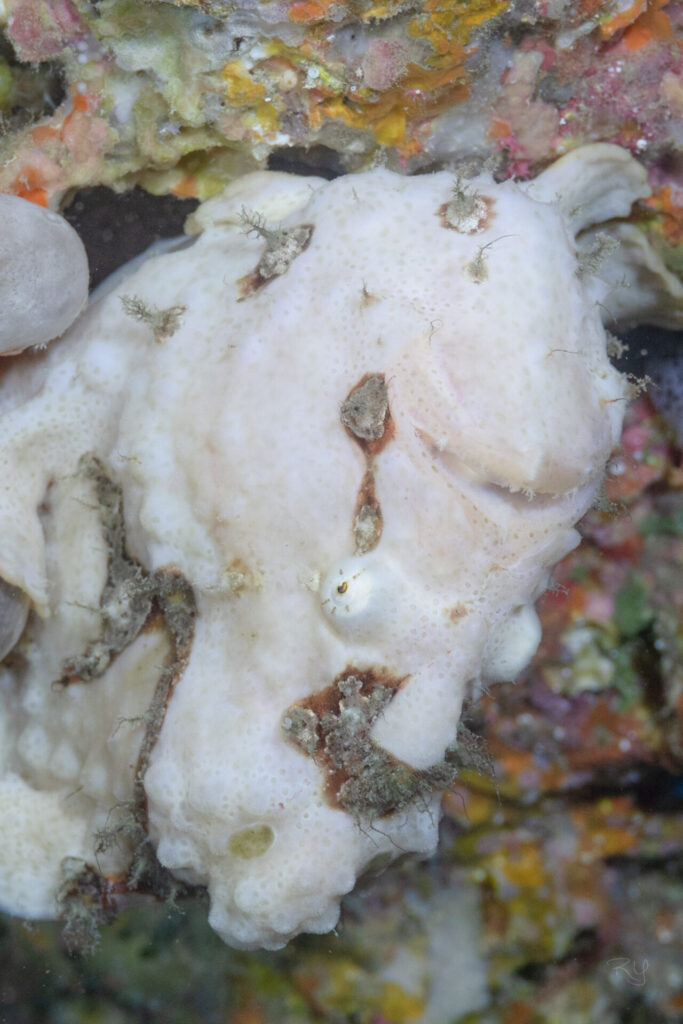
Near the exit of the Dream Hole at Manza, around 25 meters deep, there's a tunnel famously shaped like Pikachu. On the ceiling, an upside-down frogfish resides. Once pure white, its skin is gradually becoming bumpier and more textured.
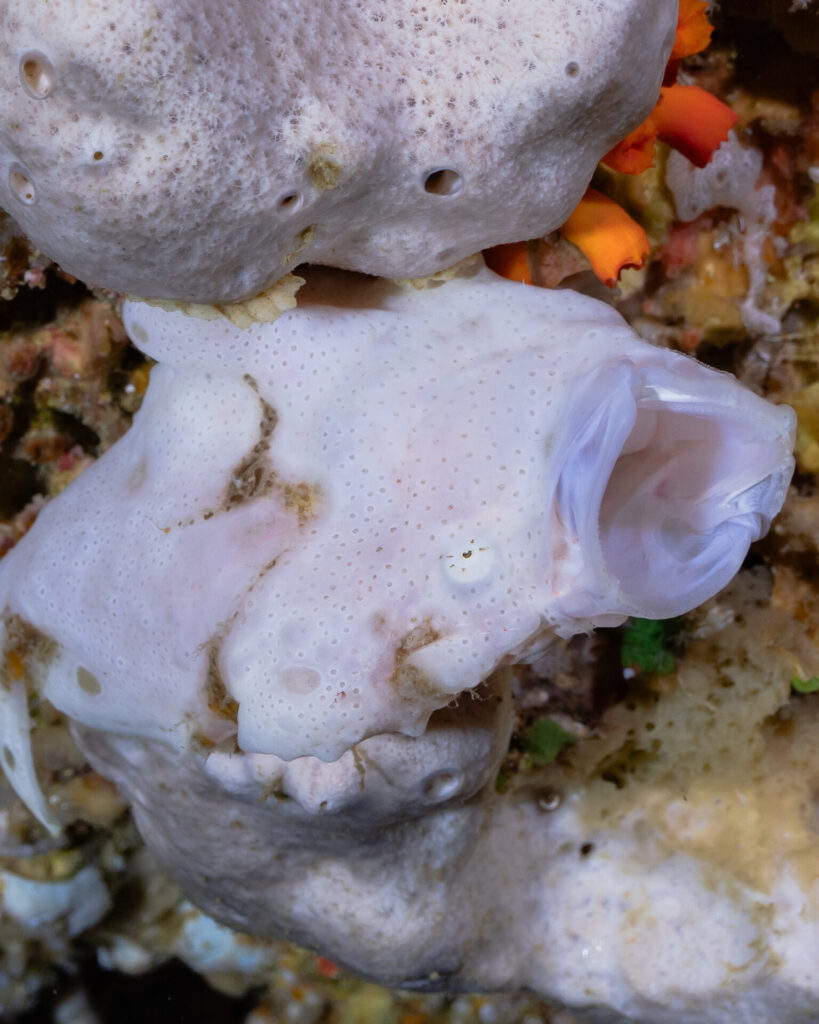
Photographed in Dec 2024
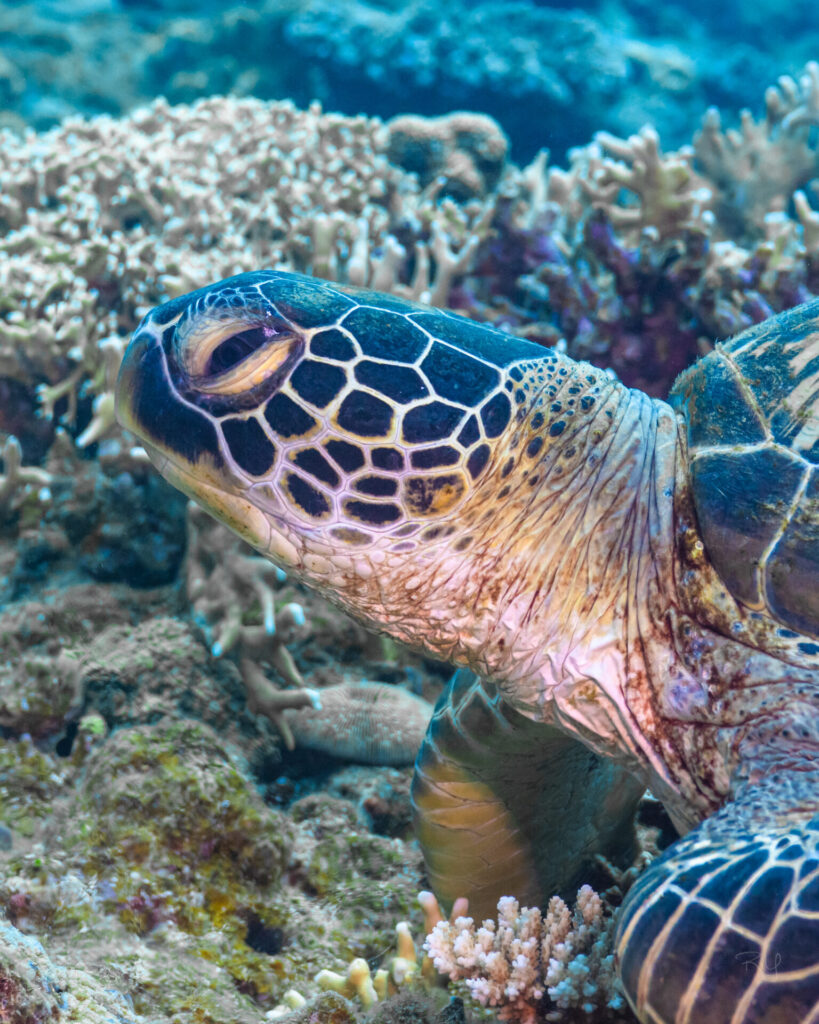
A green sea turtle that can be spotted with high probability! Watching it gracefully swim over shallow coral reefs on a sunny day is an incredibly beautiful sight—and a moment that truly captures the natural wonder of Okinawa.
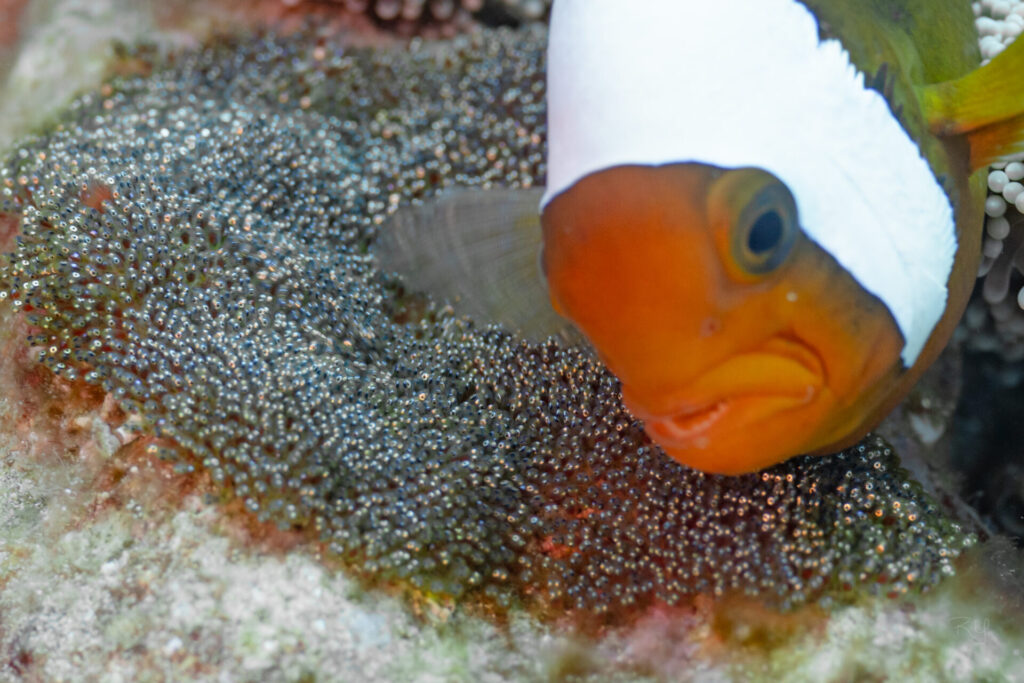
The saddleback anemonefish is one of six clownfish species found in Okinawa. While it's often called the "saddleback clownfish" due to the pattern on its back, many divers see it more as heart-shaped—adding to its charm and popularity underwater.
The action of the mother fanning the eggs with her fins to create a gentle water flow is a natural behavior known as egg fanning.
To supply oxygen:
Eggs need oxygen to develop properly. The fanning provides a steady flow of fresh oxygen-rich water.
To prevent debris and bacteria:
The water movement helps keep the egg surface clean, preventing mold or decay.
Protection and care:
This behavior also helps protect the eggs from potential threats, showing the parent's strong care and attention.
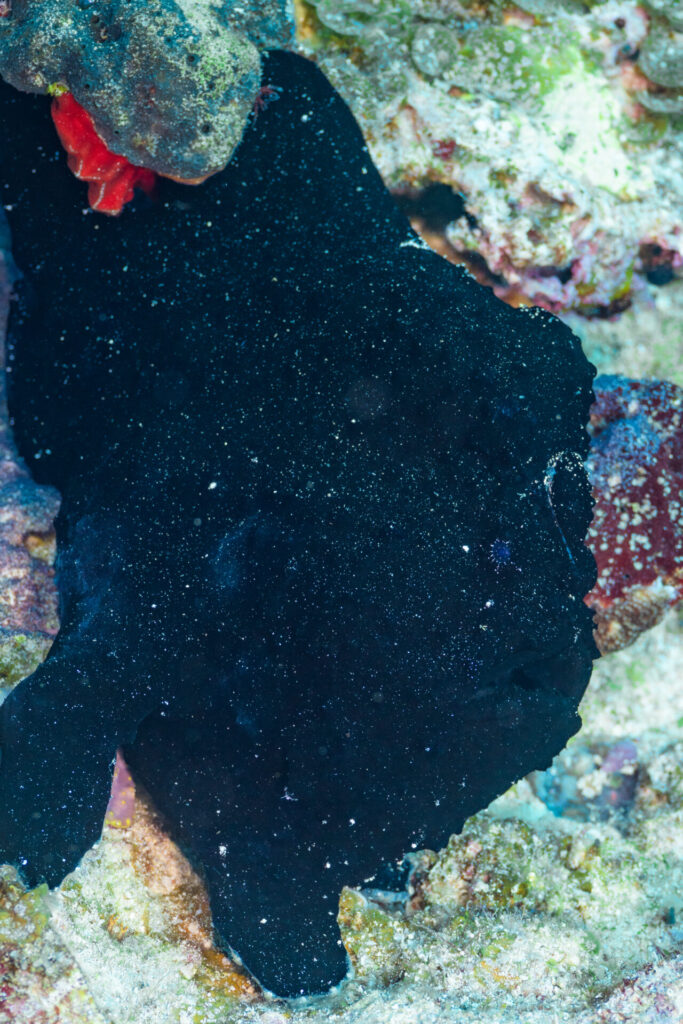
This is a black giant frogfish, which has been observed for some time at the Manza dive site called Overhang Rock.
Once you locate its eyes and mouth, it's much easier to recognize the shape of its entire body.
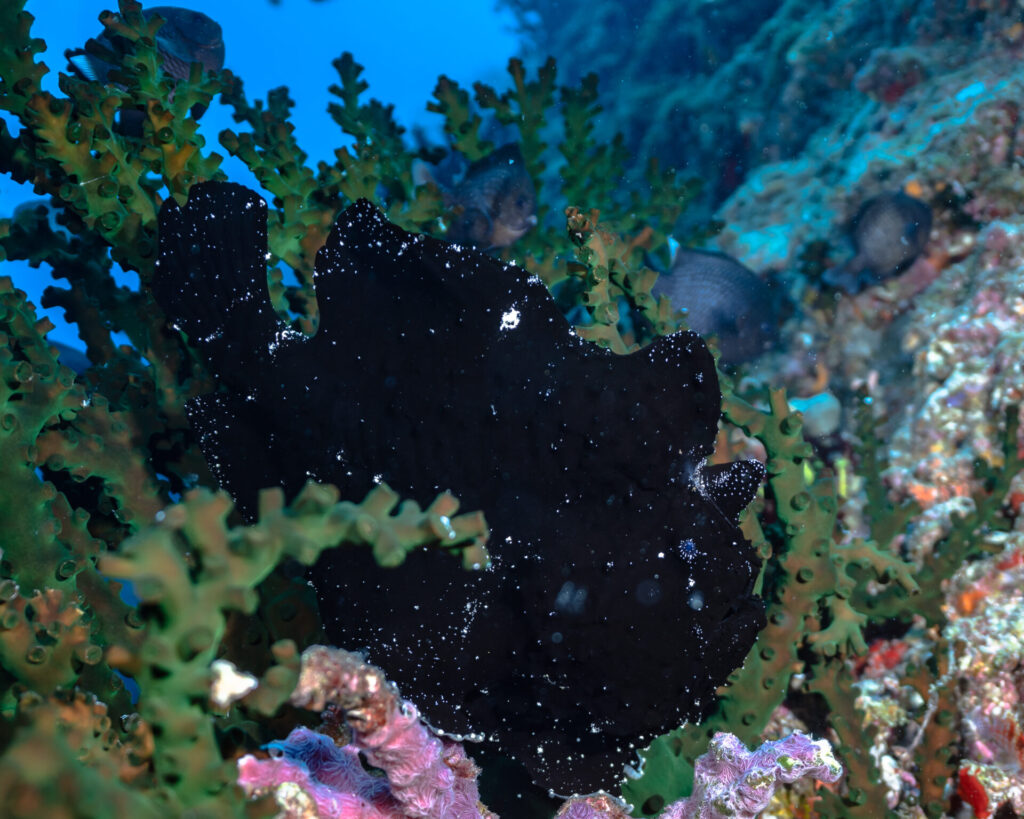
Photographed in Sep 2024

Photographed in Nov 2023
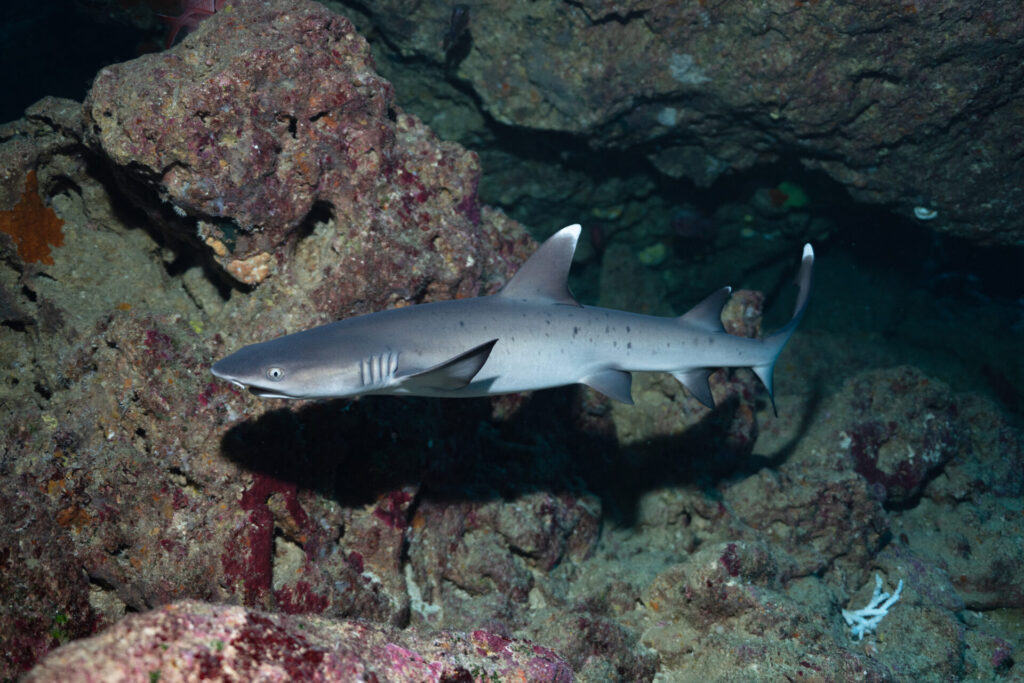
The whitetip shark can be observed all year round.

